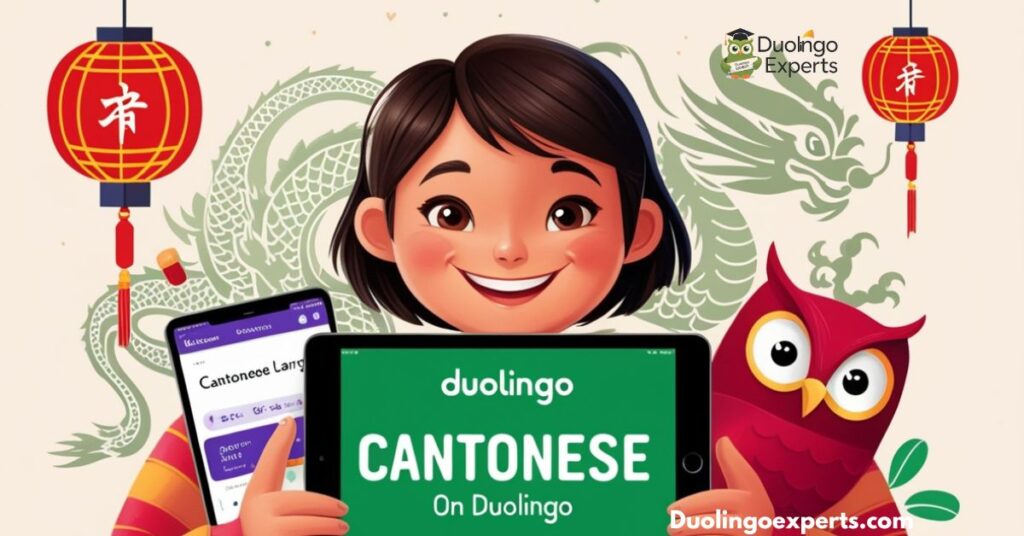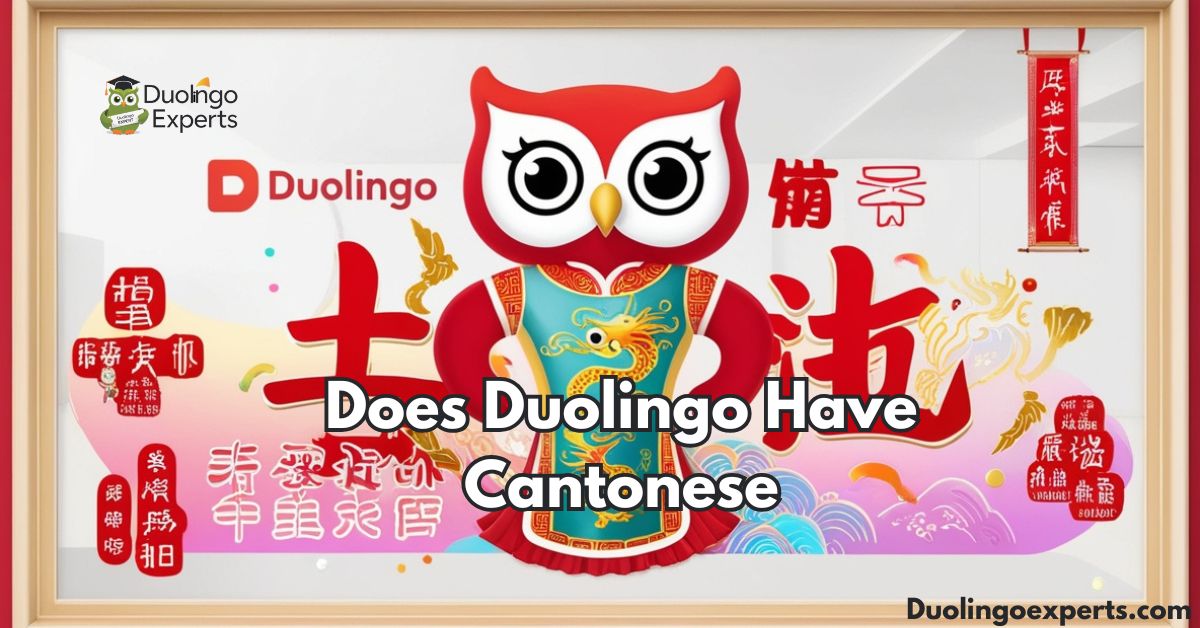Cantonese, a vibrant and rich language with deep cultural roots, is spoken by millions in Hong Kong, Macau, and parts of southern China. With its complex tonal system and traditional characters, learning Cantonese can open doors to an exciting cultural journey. However, if you’re a language learner looking to use Duolingo to master Cantonese, you may be wondering: does Duolingo have Cantonese?
In this guide, we’ll explore whether Duolingo offers Cantonese, alternative resources for learning it, and tips for mastering this fascinating language.
What Is Duolingo?
Duolingo is one of the most popular language learning apps, widely known for its gamified approach to language acquisition. The app offers over 30 languages, using fun exercises like matching words with images, translating sentences, and speaking into a microphone. Duolingo’s accessibility and freemium model have made it a go-to for learners worldwide, especially for beginner-level learners.
Duolingo’s app-based approach has revolutionized the way people learn languages, helping millions of people gain skills in a variety of languages—from Spanish and French to Mandarin. The platform’s gamification makes learning interactive and engaging, motivating users to continue their studies daily.
However, for Cantonese learners, Duolingo’s offerings are somewhat limited.
Duolingo Language Offerings

Duolingo currently provides courses in many languages, with a focus on global languages like Spanish, French, and German. However, for anyone interested in Chinese languages, Duolingo offers only a Mandarin course.
Duolingo Mandarin Course
Mandarin, the official language of China, is more widely spoken and has a significant global presence. Mandarin vs. Cantonese differences are key for learners, as the two languages are distinct. Despite both being Chinese languages, Mandarin has four tones, while Cantonese has six tones, making Cantonese particularly challenging for beginners. While Mandarin is the language of instruction in schools and official communications in China, Cantonese retains deep cultural significance in regions like Hong Kong and Macau.
Duolingo’s Mandarin course covers basic vocabulary, pronunciation, and grammar, but it focuses on simplified Chinese characters, which are used predominantly in Mainland China.
The Absence of Cantonese on Duolingo
While Mandarin is accessible, Cantonese for English speakers is not available on Duolingo’s main platform. Duolingo’s language offerings are driven by market demand and user feedback, and so far, there has not been enough demand for Duolingo to create a dedicated Cantonese course for English speakers.
Why Isn’t Cantonese Available for English Speakers?
Duolingo’s development process revolves around user engagement and resource allocation. Cantonese presents several challenges, such as its complexity with tones and the use of traditional Chinese characters, which are less familiar to many learners. Furthermore, Mandarin is simply a more popular language for global learners, and Duolingo typically prioritizes languages with higher global demand.
But there’s a bit of hope for those who are determined to learn Cantonese with Duolingo.
Cantonese on Duolingo: The Real Story

While Duolingo doesn’t have a full-fledged Cantonese course for English speakers, it offers Cantonese lessons for Mandarin speakers. These lessons, however, are limited in scope and primarily focus on learning Cantonese vocabulary and phrases in the context of Mandarin speakers transitioning to Cantonese.
Duolingo’s Cantonese Course for Mandarin Speakers
The Cantonese course for Mandarin speakers is not designed to teach Cantonese for beginners, but rather, it provides a bridge for Mandarin speakers to expand their linguistic skills into Cantonese. This approach utilizes the similarities between Mandarin Chinese and Cantonese while addressing the differences in tones and vocabulary.
However, Cantonese for Mandarin speakers may not be ideal for English speakers looking for a full introduction to the language, as it assumes familiarity with the Mandarin phonetic system and basic Chinese writing.
The Future of Cantonese on Duolingo
Duolingo’s language addition process involves gauging user demand, course complexity, and available resources. As user demand for Cantonese courses grows, Duolingo may consider adding it as a full course for English speakers. For now, though, there are other ways to learn Cantonese without Duolingo.
Alternatives to Duolingo for Learning Cantonese
While Duolingo is a great starting point for many languages, it’s not the only platform for learning Cantonese. If you’re an English speaker learning Cantonese, there are numerous other resources that can help you master the language.
Popular Cantonese Learning Apps
- Ling Cantonese
An app focused specifically on learning Cantonese, offering audio-based lessons, interactive exercises, and vocabulary-building features. - CantoneseClass101
This platform provides structured lessons, including audio, video, and cultural notes, helping learners practice listening comprehension and speaking skills. - Drops App
Drops provides a visual learning method focused on building vocabulary and helping learners master common Cantonese phrases. - Cantonese.ca
Offering free online resources, Cantonese.ca focuses on language basics like tones, characters, and simple grammar. - CantonesePod
A useful resource for learners who want to dive into more authentic language practice with real-world Cantonese content.
Textbooks and In-Depth Resources
For those who prefer structured, deep learning, textbooks like Yale Cantonese and Cantonese: A Comprehensive Grammar offer detailed explanations of the grammar and syntax of the language.
Language Exchange Apps
Language exchange apps, such as HelloTalk and Tandem, are excellent for practicing speaking Cantonese with native speakers. These platforms allow users to find language partners for real-time practice, improving both fluency and confidence.
Tips for Learning Cantonese Without Duolingo

Though Duolingo may not have a full Cantonese course, there are several ways to learn this fascinating language independently.
Mastering the Tones
Cantonese has six tones, each of which can completely change the meaning of a word. Mastering these tones is crucial to speaking Cantonese correctly. Try the following strategies:
- Listen to native speakers often to get used to the tone variations.
- Use apps like CantoneseClass101 that provide focused practice on tones.
- Practice with a tutor to get personalized feedback on your tone production.
Immersive Learning
One of the best ways to learn Cantonese is through immersion. Watch Cantonese movies, TV shows, or listen to Cantonese music to help you hear the language in a natural context. Popular Cantonese pop culture icons like Jackie Chan and Hong Kong cinema are great resources to dive into while learning.
Writing Chinese Characters
Cantonese uses traditional Chinese characters, which are more intricate than simplified Chinese characters used in Mandarin. Practice writing characters regularly to become familiar with stroke order and character recognition.
Spaced Repetition
To build vocabulary efficiently, use the spaced repetition system (SRS), available in apps like Memrise and Anki, to ensure the long-term retention of new words and phrases.
Combining Multiple Resources
For comprehensive learning, combine different tools like textbooks, apps, language exchange, and immersive resources. This multi-resource approach will help cover all aspects of the language: reading, writing, speaking, and listening.
The Importance of Cantonese in Business and Culture
Understanding Cantonese opens up doors to business opportunities in Cantonese-speaking regions. Cities like Hong Kong and Macau are major financial hubs, and knowing Cantonese can give you an edge in the global economy.
Cantonese also plays a crucial role in preserving linguistic diversity. As more languages fade into obscurity, learning Cantonese helps keep this rich cultural heritage alive. It also allows learners to connect with family heritage, especially in diasporas where Cantonese is spoken.
Comparing Duolingo to Other Cantonese Learning Platforms
Duolingo’s approach to language learning is effective, but it might not be the best tool for mastering Cantonese due to the lack of a full Cantonese course. However, it shines in its gamified language learning approach, helping beginners build vocabulary quickly and stay motivated.
On the other hand, platforms like CantonesePod, Ling, and CantoneseClass101 offer more focused Cantonese content, better suited to learners looking to master authentic Cantonese, including cultural nuances and regional differences.
| Platform | Features | Best For |
|---|---|---|
| Duolingo | Gamified, basic vocabulary and grammar lessons | Beginners to Mandarin learners |
| CantonesePod | Audio lessons, cultural context, native speakers | Intermediate learners |
| Ling Cantonese | Visual learning, audio-based lessons | Vocabulary building |
| CantoneseClass101 | Structured lessons, grammar explanations | Comprehensive learning |
| Drops | Quick vocabulary and phrase learning | Beginners looking for basic phrases |
FAQ About Cantonese on Duolingo
Does Duolingo have Cantonese for English speakers?
No, currently Duolingo only offers Cantonese lessons for Mandarin speakers.
Can I use Duolingo to learn Cantonese if I know Mandarin?
Yes, Duolingo offers a Cantonese course for Mandarin speakers, but it’s limited to vocabulary and phrase learning.
Is Duolingo effective for learning Chinese languages?
Duolingo’s Mandarin course is great for beginners, but its depth may not be enough for more advanced learners.
What are the best ways to learn Cantonese?
Combining resources like language exchange, immersive learning (movies, music), and apps like Ling Cantonese and Cantonese Pod is the most effective approach.
How to learn Cantonese on Duolingo?
Duolingo doesn’t offer a dedicated Cantonese course for English speakers. However, Mandarin speakers can access a Cantonese course for basic vocabulary and pronunciation.
Does Duolingo teach Cantonese?
Duolingo does not offer a dedicated Cantonese course for English speakers. However, Mandarin speakers can access a Cantonese course focused on basic vocabulary and pronunciation.
Will Duolingo ever have Cantonese?
It’s uncertain if Duolingo will ever offer a dedicated Cantonese course for English speakers. However, user demand and the evolving language addition process could influence its future availability.
What language apps have Cantonese?
Apps like Ling, CantoneseClass101, and CantonesePod offer comprehensive Cantonese courses. These platforms focus on vocabulary, pronunciation, and cultural context to help learners master the language.
How many sections are in Duolingo Cantonese?
The Duolingo Cantonese course for Mandarin speakers consists of several sections, but the exact number may vary. It focuses on basic vocabulary and pronunciation, without covering advanced grammar or culture.
Is Cantonese harder to learn than Chinese?
Cantonese is generally considered harder to learn than Mandarin due to its six tones and use of traditional characters. Mandarin has fewer tones and uses simplified characters, making it more accessible for beginners.
Conclusion
While Duolingo doesn’t currently offer a comprehensive Cantonese course for English speakers, there are plenty of other Cantonese language resources that can help you get started. From apps like CantonesePod to language exchange and immersive learning techniques, you can begin your Cantonese learning journey and immerse yourself in the vibrant culture of Cantonese-speaking regions.
The future of Cantonese on Duolingo remains uncertain, but by utilizing the resources available, you can still master Cantonese and enjoy the many cultural and business opportunities that come with it.
>>>Read Also: When Was Duolingo Made? The Fascinating Story

DuolingoExperts, managed by MarkJohan, offers expert insights and tips for mastering languages. A tech-driven platform to enhance your learning experience.

